War of the Ring - The Card Game started to hit the stores in US just before Christmas, and will be soon available in other countries. If you are starting to play the game, or waiting for your copy, an interesting reading is the Designer Diary by Ian Brody, originally posted on BoardGameGeek in September 2022, and reposted here.
Forward
I remember my best friend's mom asked me how I was liking "Lord of the Rings". I said I had put it down for a few days; I told her I couldn't keep reading it after Gandalf had died. She told me not to despair; it would get better.
The next day, with new determination, I ended up reading all night, wrecking my next day at school and prompting some parental enforcement on "lights out". Then a few days later came that empty feeling you get when you finish a piece of immersive fiction and you can't come to grips with the story ending. I absorbed the appendices next, then after a couple months, re-read the whole thing, which I tend to do every couple of years. I've also read it aloud three times and hope to do so at least one more time.
Inspiration
I picked up my first Lord of the Rings-themed game in 1979 from SPI: War of the Ring, which I greatly enjoyed but believe suffered from underdevelopment. I really appreciated how faithful they were to the theme as the instinct of its wargame designers was to "stick to the history". The game was both amazing and disappointing. Unfortunately, it had too many issues to bear repeated play, despite my love of the theme.
Twenty-five years after that, I was thrilled to open my copy of War of the Ring, from Roberto Di Meglio, Marco Maggi, and Francesco Nepitello immediately when the first edition was released.
At the time, my wife Karin owned a little game store in Woodstock, New York (a store that we closed in 2007). We bought and sold pretty much every Lord of the Rings game available, and there were good ones and some not-as-good ones. Of all these games, War of the Ring rose to the top for us. The theme wasn't bolted on; it was baked in, and that's what we like, especially when it comes to Lord of the Rings.
It reminded me a lot of the old SPI title, but with 25 years of game design innovation smoothing out the kinks, combined with a much more attractive presentation. A bonus was having cool miniatures that my wife painted. (Painted too well, in fact, since they invariably found their way into RPGs, then had to be tracked down when sitting down to play War of the Ring!) Karin and I played this title repeatedly, and it became the top pick for epic game days.
In 2015, Karin and I were playing War of the Ring, a rare luxury for us since forming Griggling Games, a game design studio. We play a game almost every day, but we're almost always playtesting a prototype, and we don't end up playing other games that much. We talked about how fun a version of Quartermaster General would be played on the War of the Ring board. I decided to put my toe in the water and contact publisher Ares Games about the idea. After some back and forth, they turned out to kind of like the idea because my concept would be simpler, last about half as long, and be a team game.
I thought about it a lot and drew up some ideas to present in person. We had a nice discussion at the 2016 GAMA Trade Show that I almost missed because I was hung over. (Welcome to the GAMA Trade Show!) Of course, they were kind to take the meeting to talk about a design that didn't exist, and I was sure I didn't want to start a project based on hard-to-get IP (intellectual property) without knowing there was a future.
What was obvious to Roberto Di Meglio and the team at Ares was that the War of the Ring game board and other components wouldn't necessarily work for a Quartermaster General game, and they laid out the reasons logically enough that I was immediately convinced. None of us had a great sense of what I could come up with given that my original concept document proposed a set of cards usable with the existing game, but I decided to keep working on the idea.
Two Unpublishable Games
At SPIEL '16 in Essen, I presented my first draft to Roberto di Meglio. Karin and I had tried it with a fair number of playtesters, but now was the crucial moment. Their review brought forward a number of concerns, some of which I should have anticipated had I spent a bit more time thinking about the project from the other stakeholders' viewpoints. After some back and forth, we decided to move in the direction of a card game. If I'm making this decision sound contentious, it was not. The decision to change the format into a card game was the right one, and it was obvious.
Of course, as in any project in which you change direction, I was disappointed to have spent effort that would be abandoned, and now of course, I had to re-inspire myself for the next version.
I presented this "cards only" version to Ares at Gen Con 2017. This version was very similar to the earlier prototype, except in an all-card format, with clunky directions for how locations worked. I knew it was still rough, and missing something, and naturally it was received less well.
I promised to work on it a bit more, but at a playtest a few weeks later, one of my playtesters commented at the end of the game, "This is very similar to the original board game I played last year, but with all the fun sucked out of it."
I immediately stopped testing and development on that version, then advised Ares I was withdrawing that prototype as a submission. Time for a deeper rethink and reboot.
Back to Scratch?
For a number of months, I had no mental breakthroughs and put aside the design. One day while on a walk, I was thinking about how I could reinvent the game to turn the design around. I decided I needed to start from scratch with a few baseline concepts:
- I needed to respect the format of the card game, which I hadn't done well enough in prior efforts.
- I needed it to be faithful to Tolkien's work.
- I needed it to complement the War of the Ring line, but be different enough from its namesake that it would be played to have a different experience.
- I wasn't going to waste the chance of creating a game based on Lord of the Rings, my favorite book of all time!
Thankfully, a lot of what I had already done was reusable since the characters and events are pulled from the story. In addition, the combat system is still very similar to the original design, and some of you who have played my game Quartermaster General: 1914 may see some familiar concepts. You'll also note some similarities in the path combat strengths and combat resolution to the Fellowship combat in War of the Ring the board game.
I also realized how many "design artifacts" in the card game echoed components from War of the Ring since my original concept utilized many of the same parts. Hence, there were Army cards in the place of Army pieces, and so forth. At first, I tried to see how I might pull away from those artifacts...then I realized these artifacts might be my anchor.
What I needed to be was a little less creative and steal features from War of the Ring with the idea of making something like a War of the Ring card game, perhaps akin to what San Juan is for Puerto Rico. Once I had decided on this new direction, the next redesign came fast.
In War of the Ring, the most critical limiting factor is the number of action dice a player receives each round. The first step to emulating this was to adopt the round-based pacing of War of the Ring. I decided to give players a variable number of cards in hand to play through, then everyone draws more cards at the same time at the end of the round. Players who draw more cards get to play more cards. The ability to pass in order to see what the opponent does before you play is governed by the number of cards in hand, similar to what the board game does with dice.
Much of the narrative of Tolkien's trilogy is divided in two, one part covering the military battles, the other part covering the progress of the fellowship. War of the Ring (and the SPI predecessor of the same name) both capture that dual narrative, with players forced to choose how to best allocate their resources between the two. I separated the locations into two types: battlegrounds for military conflict, and paths to reflect the journey of the fellowship.
In each round of play, one semi-random battleground and one semi-random path are activated, that is, placed in the middle of the table. The battlegrounds are divided into two decks of seven cards, Free Peoples and Shadow, and the starting player for the round picks one from their deck. Each path has a "path number" 1 to 9, with three cards for each path number. One of the three paths for that number will be activated, randomly.
My first approach at the path traced the fellowship's route over the War of the Ring board game; however, I really wanted to start in the Shire, not Rivendell. I realized going through the game that there were many more spaces than I needed, but I still wanted quite a few places referenced to allow a varied journey. I decided on having "narrative regions" within which are multiple path locations. I kept on reducing the number of regions to compact the story into as few regions as possible, yet without leaving out any significant part of the journey. After trying the design a bunch of times, nine paths seemed the right number to capture the parts of the journey in the most concise manner without sacrificing anything:
Path 1: Bag End to Bucklebury
Path 2: Between the Shire and Rivendell
Path 3: Rivendell
Path 4: Between Rivendell and Lothlórien
Path 5: Lothlórien
Path 6: The Breaking of the Fellowship to the Black Gate
Path 7: Ithilien / Gondor
Path 8: Journey into Mordor
Path 9: Mordor and Mount Doom
A big decision was how restrictive the locations would be: Which cards could go where? I personally love a deeply-themed game, but of course a game based on literature has to allow for divergence from the written narrative, and divergence in enough ways that the game is fun to play over and over. This was an aspect of the cards that evolved quite a bit through the development process. I would say that we struck a decent balance in limiting which cards can go to which locations, offering enough latitude so that the action is "plausible".
Two design mechanisms allowed us to keep things more faithful to the story. First, we gave players a "reserve area", a place on the table where cards could be played for the future. Second, I added more cards that allowed players to activate battlegrounds of their own choosing, meaning that careful players would not likely lose the chance to move their hordes in reserve to a battleground.
Another challenge was to deal with cards coming "out of order", like having an item without a wielder or drawing Shelob while the fellowship is still in the Shire. The mechanism that adds game decisions while supporting the narrative is the requirement to "cycle" a card when you play a card. The game has two discard piles: cycled cards replenish your draw deck when it runs out, but eliminated cards are out of the game for good. Once I realized how important the cycling mechanism was, I reduced the number of cards in the game to ensure players would cycle with a satisfying frequency.
The second version that was unfun could end up with a dozen battlegrounds simultaneously on the table, and it was just a nightmare to try to figure out what was going on where, with so much text to examine on dozens of cards! For a first-time player, it was an insurmountable amount of information. (Having said that, I finally played High Frontier last weekend — great game!)
So, I decided I would introduce the battlegrounds one at a time and move through them at the same pacing I was introducing the paths. In an abstract game design sense, there are two scoring "tricks" to be won, and players are presented with the tradeoff between playing to the two locations or putting the cards in reserve for later. By moving through the locations, the game became much more varied, and in the end, much more interesting. I also felt it respected the medium of a card game.
After a few prototypes, in 2018 I was offered a contract for the finished game I was now developing. Work continued into 2019, which is when Roberto became much more deeply involved in the development process. The game had finally evolved into something he and the others at Ares were actually enjoying! A big help was when he suggested I change which factions go in which deck on the Free People's side. Earlier, I had the Rohan and Dúnedain factions in one deck. Separating them meant that both players more frequently had cards to play on locations, and it also meant the teammates would have to work together more, which is, I hope, one of the fun parts. But there were many more situations.
The Playtesting Continues
Game design has an odd pacing. You can design a rather complex prototype in just a week or so, then things come to a screaming halt during playtesting. I'm lucky since my wife is willing to playtest a game almost every day, and we generally play a game 50-100 times before I try to play with anyone else in person. Getting a group of people who are hobby gamers and are willing to spend some of their spare time playing an untested game with lousy graphics is not that easy, and it's very hard to get the same people to try it in person several times so that you can discover the effects of mastery on game play.
I'm fortunate to have a very large and helpful group list of blindtesters, located all around the world, who are willing to assemble print-and-play prototypes from me. One thing I've learned, though, is it's unlikely to get people to update their prototypes more than once, so by the time I got to this major iteration, some of my original playtesters had burnt out. Fortunately, Roberto has cultivated his own (somewhat overlapping) group of War of the Ring playtesters who, fresh to the title, were willing to help test.
What came out of this major round of playtesting was that some players were looking for a more "native" experience when playing 1-on-1, some wanted options for a shorter game, and some expressed interest for more ways to play in the sandbox.
For two-player options, I briefly considered a system for player-constructed decks, but I soon realized that the decks turned into power-card decks and that most of the interesting combos would be sacrificed to ensure you had certain cards. It just wasn't that fun and would have required a significant redesign to make it work as basically a CCG. It wasn't the direction I wanted to go. As I've said elsewhere on BGG, if this game is reasonably successful, I'd look to see about a simpler/faster version based on The Hobbit.
Duels
Roberto suggested a method of putting together all of the cards into two decks for a complete two-player version. We tried it a lot of different ways to try to get the balance right, but we were having trouble getting the decks to cycle in time to see cards at least a second time, and that introduced too much luck. Ultimately, I tried modifying the ring token effect to move more cards through players' hands. While this change added a bit of time to the (otherwise) still shorter two-player "duel", it added the secret sauce needed to have the game work largely as intended.
When you're playing the duel, you can use the ring once every round. You pick up three cards, add one to your hand, cycle one, and eliminate one. This seems to have fixed the cycling problem. The duel game is very similar to the game with four players. It is a bit more manageable since you have only one hand, but you have more cards in hand, so it's not that much different.
I was very interested in writing "scenarios" that would focus on exploring one aspect of literature. This is a game about a story, and I liked the idea of using that as inspiration. I wrote one scenario for each of the three books. In the end, The Fellowship of the Ring scenario turned out very nicely, but The Two Towers and Return of the King scenarios were too short and sort of scripted.
We decided what we'd do is publish them online later. In my mind, these two scenarios were worth a few plays maximum — something you could do over lunch — but we agreed that if a scenario were included in the box, it might not be well-received if it weren't highly replayable. However, as an add-on freebie, players would feel more comfortable with the idea of playing it twice (once on each side), then putting it away. I like the idea of posting occasional scenarios designed by myself (and others?), kind of like Squad Leader scenarios used to be published in General magazine.
Along those lines, as I write this, I've been developing a solitaire/co-operative version for one or two players playing the Free Peoples. Automating the Shadow play in such a way that is simple to implement has been my trouble. I mean, I have something, but it's a complex decision tree that makes you spend too much time determining what the bot player does compared to what you do. I think for a solitaire/co-op-only game, the bot needs to be simple to operate so you spend most of the time on your own decisions. I'm still working on this and hope to be able to produce a comprehensible, fun set of rules before the game hits the shelves.
The topic has come up, so I'll also speak to the significant amount of time already spent working on an expansion. I know you might think it's a bit early, but actually, it's not. Very early in the design process, I decided to cut the number of players from six to four, but define a space where I could expand should the game be successful. I decided that the basic four-player game would focus on the narrative presented in the main storylines, and I would leave the rest of Middle-earth for the expansion. A bit more than a year ago, when I started to think this thing might actually happen, I dove into the expansion again. I realized I needed to make sure an expansion for another two players was going to dovetail nicely into the four-player game and that I wasn't missing any crucial elements as I put them together. Not a lot of things changed, but a few little ones did. My #1 target was always making the best base game I could and not making two-thirds of a game.
We're still not done with the expansion, and we probably won't be done until we hear what everyone has to say about the base game upon release. We've already had one major round of playtesting on the expansion, and I'm looking forward to playtesting the next revision, now that we've made some adjustments based on the first round.
Meanwhile, I've been blown away by the artwork in War of the Ring: The Card Game and can't wait to get my hands on the final product!
In closing, I'll thank first my wife, Karin Weston-Brody; next I'll thank Roberto Di Meglio, John Velonis, and Kevin Chapman for editing and proofreading support, not to mention the many playtesters and mentors, credited and otherwise.
I hope you enjoy War of the Ring: The Card Game. It's certainly been a long journey, but the road goes ever on.

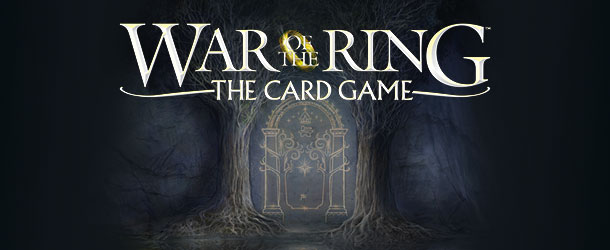
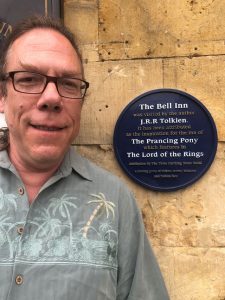
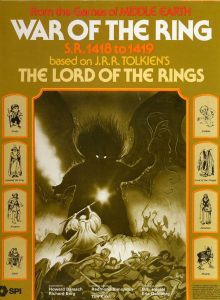
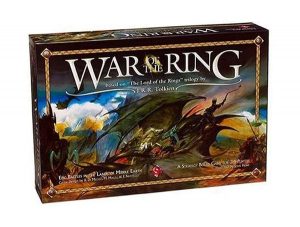
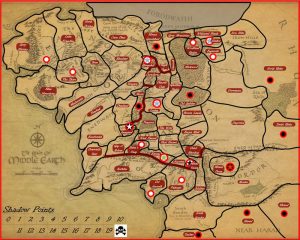
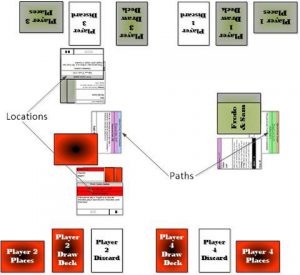
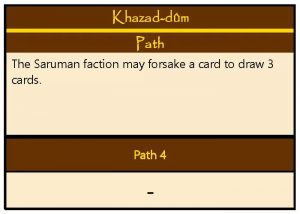
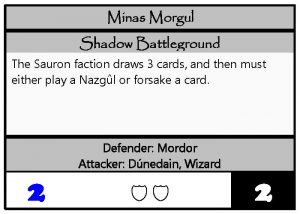
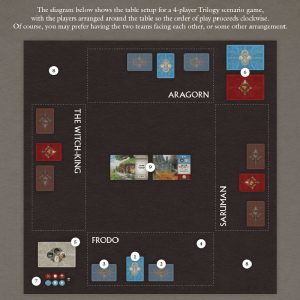
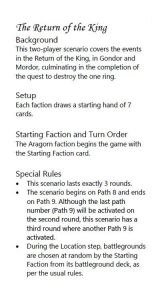
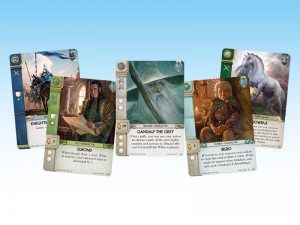

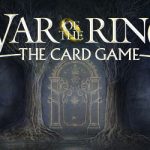
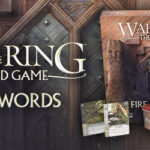





Follow Us on